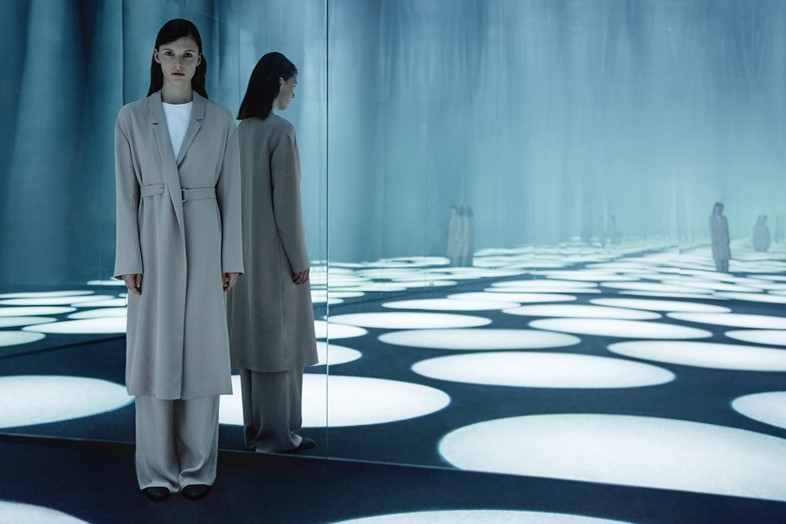Milan’s annual design fair may have drawn to a close yesterday, but these five trends are set to determine our environments for the year ahead, reports Billie Muraben
Every year Milan is transformed into a city-wide celebration of arts and culture for the Salone Internazionale del Mobile. Now in its 55th season, the fair has long been renowned for being the site of the most inventive and influential works from the world’s leading furniture designers, art schools and fashion houses alike. To mark the occasion, we have identified five standout trends that, according to Salone, are set to define our environments...

Connectivity and Adaptability
Flexible spaces, furniture on wheels and multi-use storage systems played a significant role at this year’s fair. At Another Perspective 4, designers responded to the ever-contracting living spaces of the urban sprawl, presenting work that could shift to fit the requirements of its environment. Furniture designer Thomas Schnur presented a gridded storage system that functioned as a room divider, plant display and wardrobe, while Studio248 designed a cabinet-on-wheels with multiple storage options.
As part of the XXI Triennale di Milano exhibition, Carlo Ratti showed the Lift-Bit, the world’s first internet-connected sofa. With the support of Vitra, Ratti built the sofa out of a series of stools that could be raised and lowered. It adapts to the user’s requirements, with the ability to shift into an armchair, a bed, an entire sitting room or auditorium and is controlled remotely via an app.
Meanwhile, the Royal Academy of Art The Hague presented RESET, an experimental environment set in a private apartment where, through interdisciplinary collaborations, participants and visitors take on and reflect upon some of the challenges of contemporary life. This included the significance of banal furniture, redefining space through music, and new uses for corridors and temporary walls.

New Realities
COS were one of the first fashion brands ever to show at Salone del Mobile, and this year they collaborated with artist and architect Sou Fujimoto on Forest of Light, a multisensory installation made up of beams that react to the movement of participants. When the space is inhabited, it forms a glowing thicket of beams, with fog, sound and mirrors, blurring the readability of the room.

In When Objects Dream, students from Swiss university ECAL challenged common perceptions of everyday objects including brooms, books and toasters by presenting them with virtual as well as physical personalities. Using virtual reality headsets, visitors could look inside the objects to see and hear life from the perspective of the otherwise inanimate.
Meanwhile, at Ventura Lambrate, three of Norway’s most forward-thinking design institutions came together to showcase the very best of the Scandinavian country’s innovation and artistry – not least this in this prototype for a new chair by Sara Wright Polmar, which encourages new ways of sitting.

Places for Pleasure
Reflecting on the interaction between interiors and psychology, Atelier Biagetti presented NO SEX, a pastel pink clinic for sexual rehabilitation. Designers Alberto Biagetti and Laura Baldassari saw it as an innocent pleasure house where patients could detox or retox as required. Decorated with a daybed, pink leather seating, clinical curtains, plush plants and optician’s eye charts, the clinic’s furnishing was designed with the intention of being made for one, but wide enough for two.

Amsterdam’s Dirty Art Department took on an abandoned slaughterhouse where they showed Wandering School, an interactive space that took its inspiration from radical schools and alternative living communities. Participants could sleep, reflect or rave in a temporary hotel, take part in daily presentations or reveal all in a Big Brother-style diary room; as well as viewing the Daily Solo Show marathon, attending film nights or print workshops.

Iconic Re-Runs
Karakter is a Danish furniture company known for recreating iconic archive pieces, which this year focused on Achille Castiglioni’s shelving system and display stand. The Libreria Pensile is a series of black shelves supported by string, originally made for an exhibition in 1957, while the Rampa is a multifunctional table on wheels inspired by the florist’s display stands on Italian town squares. Karakter were the first non-Italian company to reproduce Castiglioni’s work, and is part of their ongoing collection recreating key pieces of Italian design.

As well as key pieces, antiquated materials and processes were also resurrected. Stained glass was shown by multiple galleries, including the Spazio Pontaccio where Patricia Urquiola and Federico Pepe exhibited Credenza. Their capsule collection was inspired by the windows at Cologne Cathedral designed by Gerhard Richter, and featured geometric panels of red, yellow and blue glass installed in a series of cabinets.

Natural Forms
At Ladies & Gentlemen, classic craftsmanship was re-imagined by a group of newly practising designers. Cristina Celestino cast ceramic tiles in the form of iridescent turquoise and emerald green feathers. The tiles were layered in a plotted form that conveyed natural shifts in tone and pattern, reflecting the light and the convergence between the natural and manmade.
Meanwhile, the Design Academy Eindhoven presented Touch Base, an exhibition of tactile interactions. As a reaction to the digitalisation of life, DAE’s show had everything from a petting zoo to re-appropriated pine needles, nettle textiles, ceramics made using leftover dairy produce and a vagina mirror. The show represented a shift in the work of students at DAE, and elsewhere, and their want to respond to the real world, its problems and its potential.
